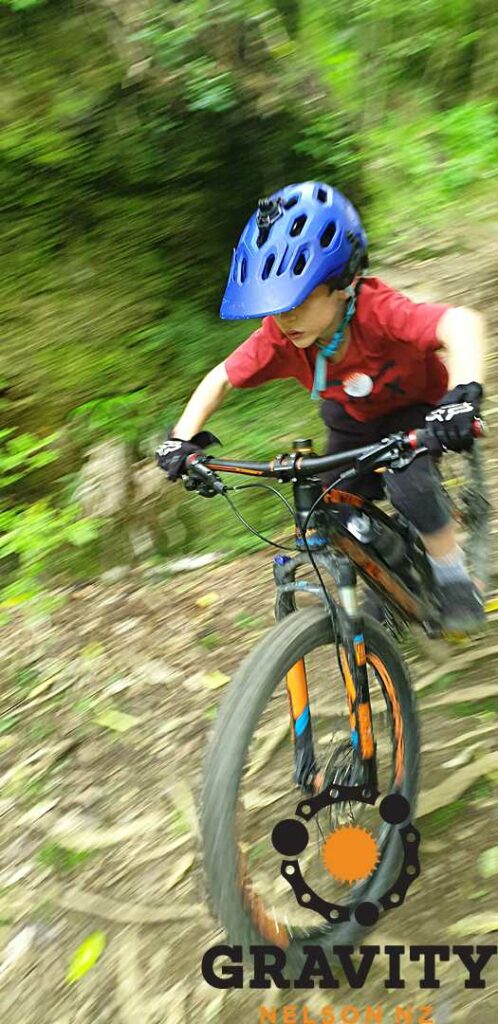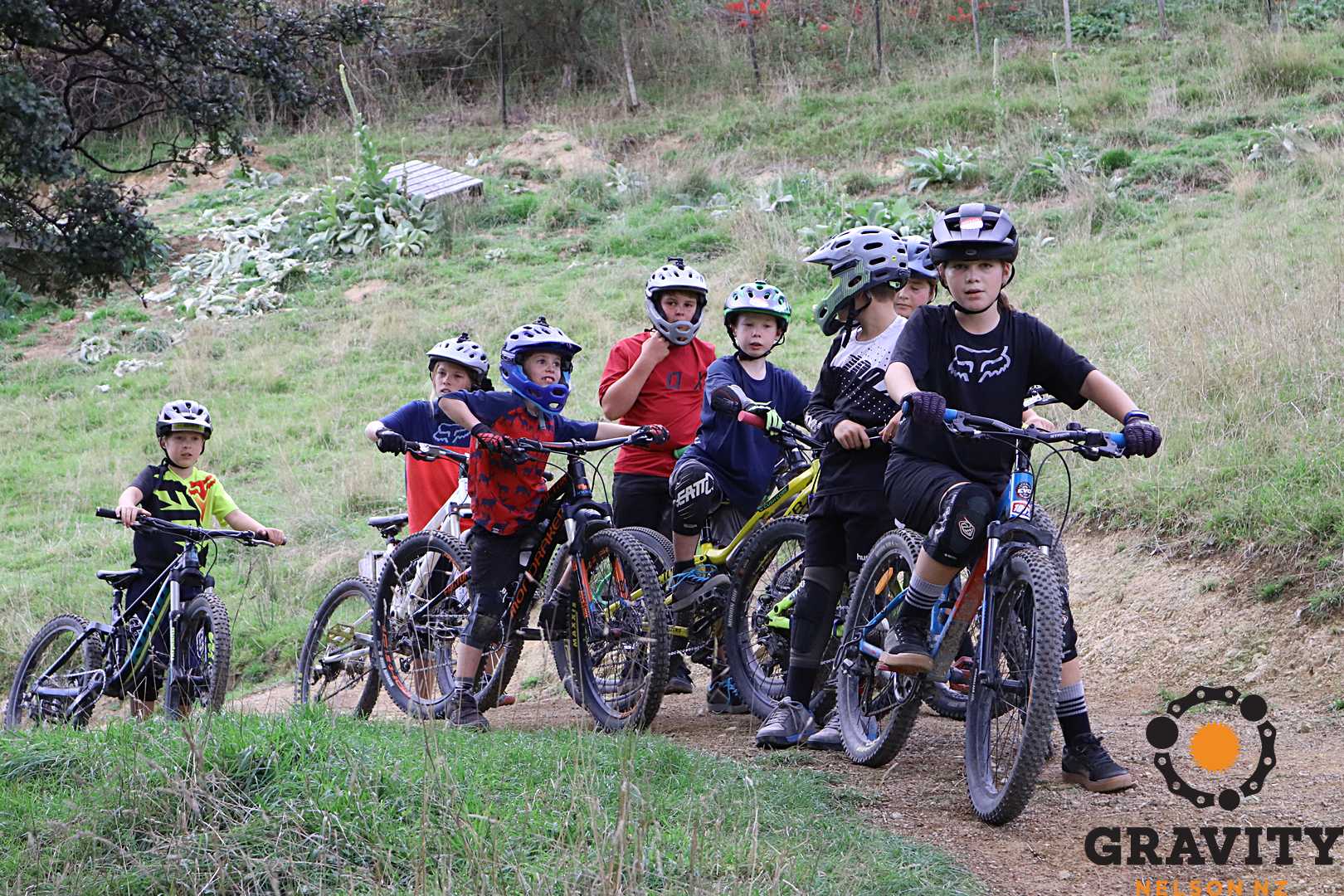
Introducing someone to mountain biking can be a fun and rewarding experience, but it’s important to approach it with care and consideration to ensure a positive and safe experience. Extra time and care taken to introduce a new rider to mountain biking will pay off with a lasting love of the sport. Here are some recommendations for successfully introducing someone to the sport of mountain biking:
Before you even start, start with safety.
Ensuring that the person you are introducing to the sport of mountain biking is on a safe, good condition, correctly sized mountain bike is vital to them having a good experience. As tempting as it is to put your friend on your old bike that is the wrong size for them, or that has been sitting neglected in your garage for years… while you jump on your brand new high-end bike … is a recipe for disaster. Take the time to find a bike that fits and is running well for your friend, or put them on your flash new bike (if they fit) while you ride the old bike! Make sure your companion’s bike is in good working order before heading out on the trail. Check the brakes, gears, and tires, and bring along tools and supplies to make repairs if necessary. Clearly it is also important to stress the importance of wearing proper safety gear, such as a helmet, gloves, and knee pads. Again, don’t put them in a poorly fitting, old or damaged helmet. If you or your friends don’t have access to appropriately sized equipment then consider renting a good quality bike and safety equipment for those initial sessions so they are more comfortable and safer.
Start with the basics:
Before heading out on the trails, make sure your companion has a solid understanding of the basics, such as how to balance on the bike, shift gears, and control their speed using the brakes. You can start by practicing in a safe and controlled environment, such as a parking lot, grass field, or a smooth, flat trail. Taking the time to practice using cones or items of clothing to mark out imaginary trail features and build confidence in correctly applying these basic techniques will make riding trails much safer and more fun. There are many important mountain biking core skills that can be counter-intuitive to someone new to the sport, this can be made worse by people assuming that mountain biking is “just like riding a bike”. The reality that mountain biking requires different techniques and approaches to road cycling, and anyone with a lot of road cycling experience might actually take some considerable time to unlearn those skills and learn how to mountain bike correctly. Equally importantly it is vital that the person teaching these basics actually has up-to-date knowledge of mountain biking techniques and doesn’t incorrect techniques to the newbie which might trip up their progress.
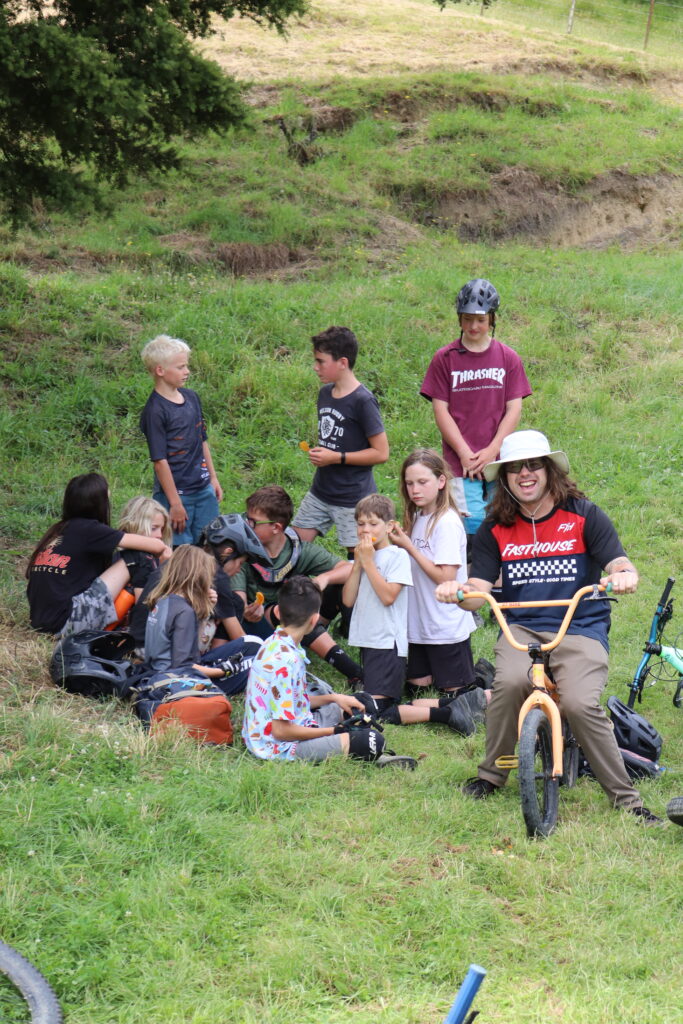
A mountain bike coach can ensure a new rider is learning correct skills.
Choose the right trail:
When selecting a trail, choose one that is appropriate for the skill level of your companion. Avoid overly technical trails with steep drops, rocky terrain, and challenging obstacles, and opt instead for easier trails with rolling hills and smooth, flowy trails with good sight lines and a wider track. Even if you have been mountain biking for as little as a year it is very easy to forget how intimidating and stressful even mildly difficult trails can be when you start out. Avoid taking a newer rider to a “favourite” trail you love as it is almost definitely going to be too hard for a new rider. Instead look at the easiest trails in a riding centre near you and plan a low-key introduction on those trails. It is extremely important to understand that a newer rider will likely be suffering stress overload on their initial rides, and their body will automatically kick into “fight or flight”, pumping them full of adrenaline and reducing their ability to successfully apply any basic techniques you have already shown them in a more controlled environment. The secret here is to introduce the concept of a “scouting lap” or a “pre-ride”, where you explain to the person that the first lap is only a warm-up to get to know the trail, and that they can stop and inspect trail features, walk some if necessary, and just generally build up their confidence and calm their brain down. Then, the key is to repeat this first easy trail so that the brain’s pattern recognition system can calm down the “fight or flight” response thus enabling the rider to react more subtly and learn how to apply the skills they are learning. In an ideal world you would repeat an initial introductory trail 4 or 5 times to build up confidence and help the rider see and feel their progression. This is always preferable to dragging them around 4 or 5 different trails when they are learning as they will constantly be stuck in the “fight or flight” mode with each new trail.
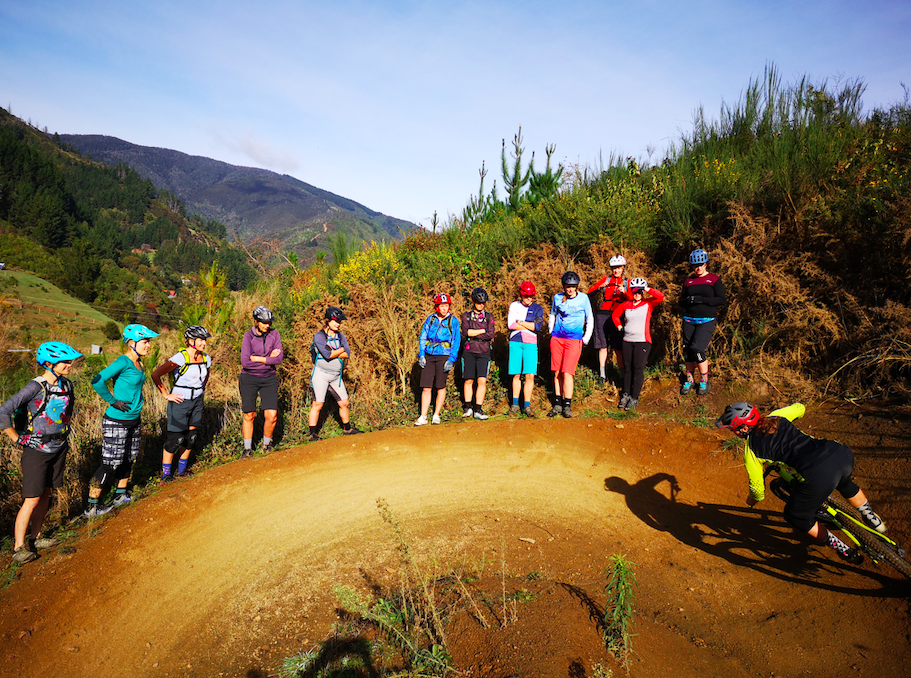
Start on easier trails and progress steadily up in difficulty
Set realistic expectations:
Be clear with your companion about the level of physical exertion required and the amount of time they can expect to spend on the trail, and in particular be accurate with how long a specific uphill might take. Don’t underestimate it, and always plan a shorter ride with only small climbs for initial excursions. “Cycle fitness” is a real thing, and even an individual who is fit for other sports will initially find mountain biking more tiring than expected. This is especially important with kids, but applies to adults as well. The reality is that mountain biking as a sport usually involves riding up a hill before the fun of the downhill, and if you underestimate how tiring the uphill is for the newbie, they may very well start hating the sport before they get to the first downhill where the fun is!
Take breaks:
It is pretty obvious that mountain biking can be physically demanding, so it’s important to take regular breaks to rest, snack and hydrate. However also don’t underestimate how mentally tiring learning to mountain bike can be. Learning new concepts, and being in a constant state of alertness and uncertainty can quickly tire new riders out. Encourage your companion to take a break whenever they feel the need, and avoid pushing them beyond their limits. In fact, a newer rider could quite easily underestimate their energy and hydration needs so it might be wise to plan regular timed stops along the way. These stops can also be used as an opportunity to review riding concepts, look at trail features on the climb, and just to enjoy the view. After the ride make sure to plan for a rewarding snack or treat as well.
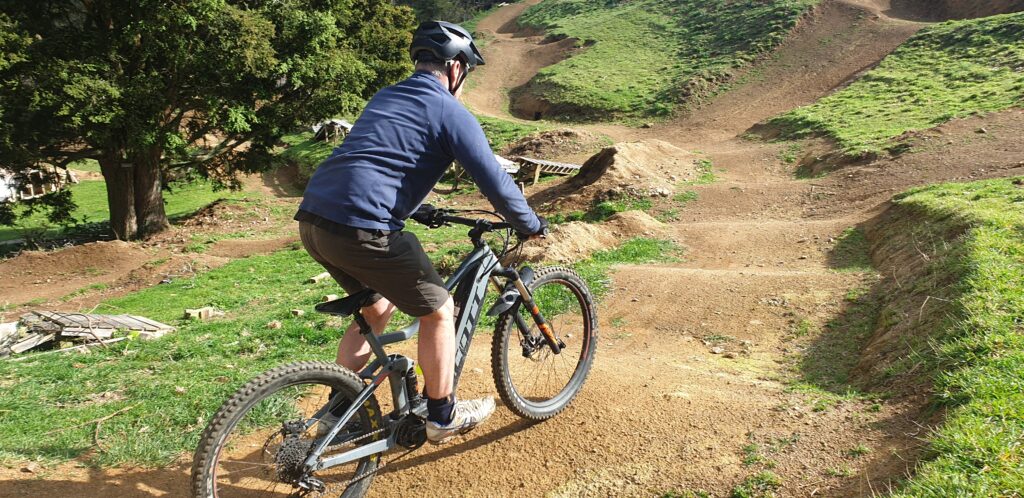
Stay fresh with lots of breaks while you learn the basics
Offer encouragement:
Mountain biking can be challenging, especially for beginners, so offer encouragement and praise for their efforts. Celebrate their successes and offer a small quantity of constructive feedback to help them improve their skills. This is another reason to repeat initial easy trails multiple times as it sets the new rider up for successes and improvement they can see and feel on their first day out. Note that new riders can be hyper-critical of their own performance, especially if they are being introduced to the sport by loved ones such as their spouse or parent. This can add an emotional powder keg to poorly planned initial mountain biking adventures, something that needs to be defused and avoided by applying all of the tactics in this article. In instances where multiple attempts to introduce your loved one to the sport of mountain biking have failed it might be appropriate to hire a professional mountain bike coach who can remove the emotional element from the learning process and help the new rider develop skills and confidence.

Successfully introducing new riders to the sport of mountain biking
In conclusion, introducing someone to mountain biking can be a fun and rewarding experience, but it requires careful planning and consideration. Start with the basics, choose the right trail, set realistic expectations, take breaks, offer encouragement, plan for maintenance, and emphasize safety to ensure a positive and safe experience for both of you. With patience and practice, your companion will soon be a confident and skilled mountain biker and be ready to progress their skills.

